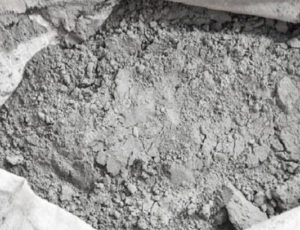The properties of cement have a significant impact on a structure’s serviceability, strength, and durability. The most important and highly recognized structural material used in construction is cement. All types of construction, from large skyscrapers, bridges, and tunnels to modest residential structures, use cement. It stands out as a crucial component of industrial buildings such as power plants, refineries, steel plants, cement mills, bridges, and other infrastructure. Cement, when mixed with sand and aggregates, forms concrete, and when mixed with sand, it forms mortar. The serviceability, strength, and durability of a structure are entirely dependent on the quality of cement used for concrete and mortar; similarly, the properties of cement are directly related to the Cement Manufacturing Process, which involves the proportioning of ingredients, grinding, packing, and storing, among other things.
The cement properties are classified into PHYSICAL PROPERTIES and CHEMICAL PROPERTIES
- Physical Properties
- Chemical Properties
Physical properties of cement
Physical properties distinguish different cement blends used in construction. Some critical parameters influence cement quality. Good cement has the following physical properties and is based on the following factors.
- Fineness of Cement
- Soundness
- Consistency of cement
- Strength
- Setting time
- Hydration of cement
The fineness of Cement- Properties of cement
Fineness is a measure of the cement particles or the specific surface area of cement. The fineness of cement has a direct impact on its rate of hydration. The specific surface area that is available per unit volume of cement increases as cement fineness increases. i.e. There is more space available for cement and water action (hydration). This accelerates hydration and early strength gain in concrete. Concrete bleeding can be reduced by increasing cement fineness. However, this also causes dry shrinkage, which can be prevented by adding more water.
To determine the fineness of the cement, sieve analysis tests, air permeability tests, and sedimentation methods are used.
Soundness – Properties of cement
The ability of hardened cement paste to not shrink or expand and retain its volume is referred to as soundness. Cracks will appear whenever there is a volume change, making cement unsound. The durability and life of the structure can be impacted by unsound cement. Cement’s volume stability is what is referred to as soundness.
The quality of cement manufacturing also has a significant impact on cement quality. Inadequate heating can leave cement with too much lime. Cement plants have full-fledged quality labs to thoroughly inspect the ingredients; however, cement must be tested for structural soundness before it is used in any structure. The Le Chatelier apparatus is used to determine the soundness of cement..
Also Read : Soundness test of cement : Procedure and calculation
Causes of Unsoundness of cement
The amount of excess lime and magnesia in cement has an impact on its soundness. Excess lime hydrates slowly to form slaked lime, affecting the physical properties of cement. The hydration difference between free lime (CaO) and slaked lime can change the volume of concrete during hardening, making cement unsound. Likewse, excess magnesia also reacts with water and affects the hydration process making cement unsound.
Gypsum is added to cement to control the setting time. Excess gypsum can react with Tricalcium aluminate to form calcium sulphoaluminate, which can cause the concrete to expand while hardening. Gypsum must be added with extreme caution in order to prevent the cement from becoming unsound.
Consistency of cement
The ability of a cement-water paste to flow under normal conditions is defined as cement consistency. To make dry mixes workable, the optimum water-cement ratio must be maintained. The consistency of cement is a measure of a cement paste’s optimum water-cement ratio, which allows a Vicat apparatus plunger to penetrate a depth of 5-7 mm measured from the bottom of the mould. If so, we can assume that the paste has a normal consistency. The ideal water percentage for normal consistency ranges from 26% to 33%. The Vicat apparatus is used to perform the standard consistency test
Also Read : Consistancy test on cement – Apparatus and procedure.
Strength of cement
Cement is the ingredient that gives mortar and concrete their strength. Cement hydrates react with water to increase concrete strength. Prior to use in construction projects, cement’s strength must be verified. Many factors can influence strength, including water-to-cement ratio, ingredient proportioning, curing conditions, age, and so on. The cement must be checked for compressive, tensile, and flexural strength. The cement bags have grades mentioned over it that represent the strengths. The strength is determined by checking the compressive strength of cement.
Setting time of cement
The setting time of cement starts from the moment water is added to the cement and continues through the cement water reaction to the hardening of the paste. The time taken from the production process stage to the hardening stage is referred to as the cement setting. This includes activities such as mixing, conveying, placing, and hardening. The setting time of cement is influenced by its fineness, water-cement ratio, chemical content, and the presence of admixtures, among other factors. Accordingly, setting time must be adjusted in accordance with structural requirements to ensure the requisite initial and final setting times. This should be neither too low nor too high.
The initial setting time is when the mixture begins to stiffen and become plastic. For cement, the initial setting time is 30 minutes. The final setting time is when the cement hardens to the point where it can withstand loads. The final setting time is around 10 hrs.
Hydration of cement
Cement must be mixed with water before being used in any construction project. When water and cement are mixed, a chemical reaction occurs, resulting in the generation of heat. The heat generation during the process is called heat of hydration. It is crucial in mass concrete work as well as work performed in hot and humid conditions.
Related posts – Hydration of Cement
The chemical reaction between water and cement is called hydration. Heat generated by hydration aids in maintaining the curing temperature in cold environments and can be used to control cement quality. When used in mass concrete, heat generation is very high, which can cause unwanted stresses in the structure. The cement’s fineness is regulated by its C3S and C3A content, water-to-cement ratio, fineness, and curing temperature. Accordingly, the heat of hydration is determined by the temperature difference between dry and partially hydrated cement.






5 comments
Comments are closed.